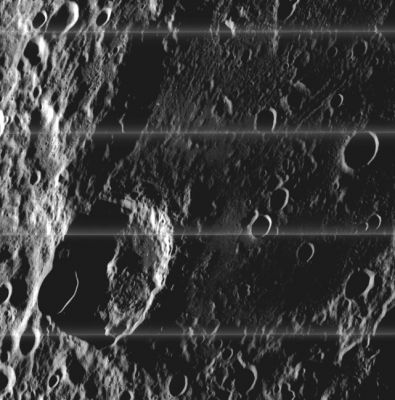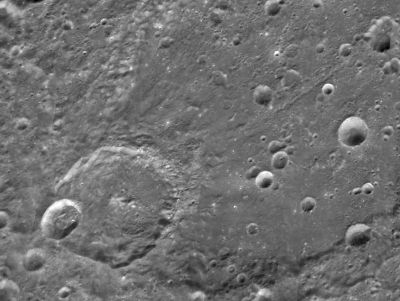Slipher
Contents
Slipher (in d'Alembert)
|
Lat: 49.29°N, Long: 160.23°E, Diam: 72.28 km, Depth: km, Rükl: (farside), Lower Imbrian |


Image at left: //Lunar Orbiter V-085M// Image at right: //Clementine//
Slipher is the crater at bottom left, with impact melts north of it. The much larger crater northeast of Slipher is d'Alembert.
The small crater on the southwestern part of Slipher's rim is Slipher S.
Slipher's location is very near the southwestern part of d'Alembert's rim, and it's as if Slipher is always trying to escape out of d'Alembert, pulling part of d'Alembert with it. The same thing seems to happen within Slipher (with Slipher S).
Images
LPOD Photo Gallery Lunar Orbiter Images
Maps
(LAC zone 18D4) USGS Digital Atlas PDF
Description
Slipher's location is at the southwestern part of the much larger crater d'Alembert.
As mentioned above, it's as if Slipher is always trying to escape, pulling part of d'Alembert's rim with it, southwest-ward.
The same thing seems to happen within Slipher itself. Small crater Slipher S is also trying to escape, pulling part of Slipher's rim with it.
- DannyCaes Apr 17, 2017
Description Wikipedia
Slipher (correct link).
Additional Information
- IAU page: Slipher
- Central peak composition: A, GNTA1 (Tompkins & Pieters, 1999)
- The image above shows significant impact melt, radial striations and crater chains to the north of the crater. - tychocrater Aug 12, 2007
Nomenclature
- Earl Charles Slipher (March 25, 1883 – August 7, 1964) was an American astronomer. He was the brother of astronomer Vesto Slipher. Slipher was born in Mulberry, Indiana. He joined Lowell Observatory in 1908 and became a noted planetary astronomer, concentrating on Mars. He published Photographic History of Mars (1905-1961).
- Vesto Melvin Slipher (November 11, 1875 – November 8, 1969) was an American astronomer. He spent his entire career at Lowell Observatory in Flagstaff, Arizona, where he was director from 1916 to 1952. He used spectroscopy to investigate the rotation periods of planets, the composition of planetary atmospheres. In 1912, he was the first to observe the shift of spectral lines of galaxies, so he was the discoverer of galactic redshifts. He was responsible for hiring Clyde Tombaugh and supervised the work that led to the discovery of Pluto.
LROC Articles
LPOD Articles
Bibliography
Earl Charles Slipher and Vesto Melvin Slipher in the Sourcebook Project (William R. Corliss)
Both in Mysterious Universe, a handbook of astronomical anomalies (1979) :
E.C.Slipher:
- The Surface of Mars, Nature, 1941 (anonymous, page 388)
- Row of Dark Spots on Jupiter, Science, 1929 (anonymous, page 437)
V.M.Slipher:
- Comet or Asteroid?, Science, 1942 (anonymous, page 523)
Named Features -- Prev: Sklodowska -- Next: Slocum